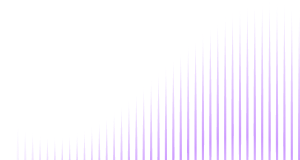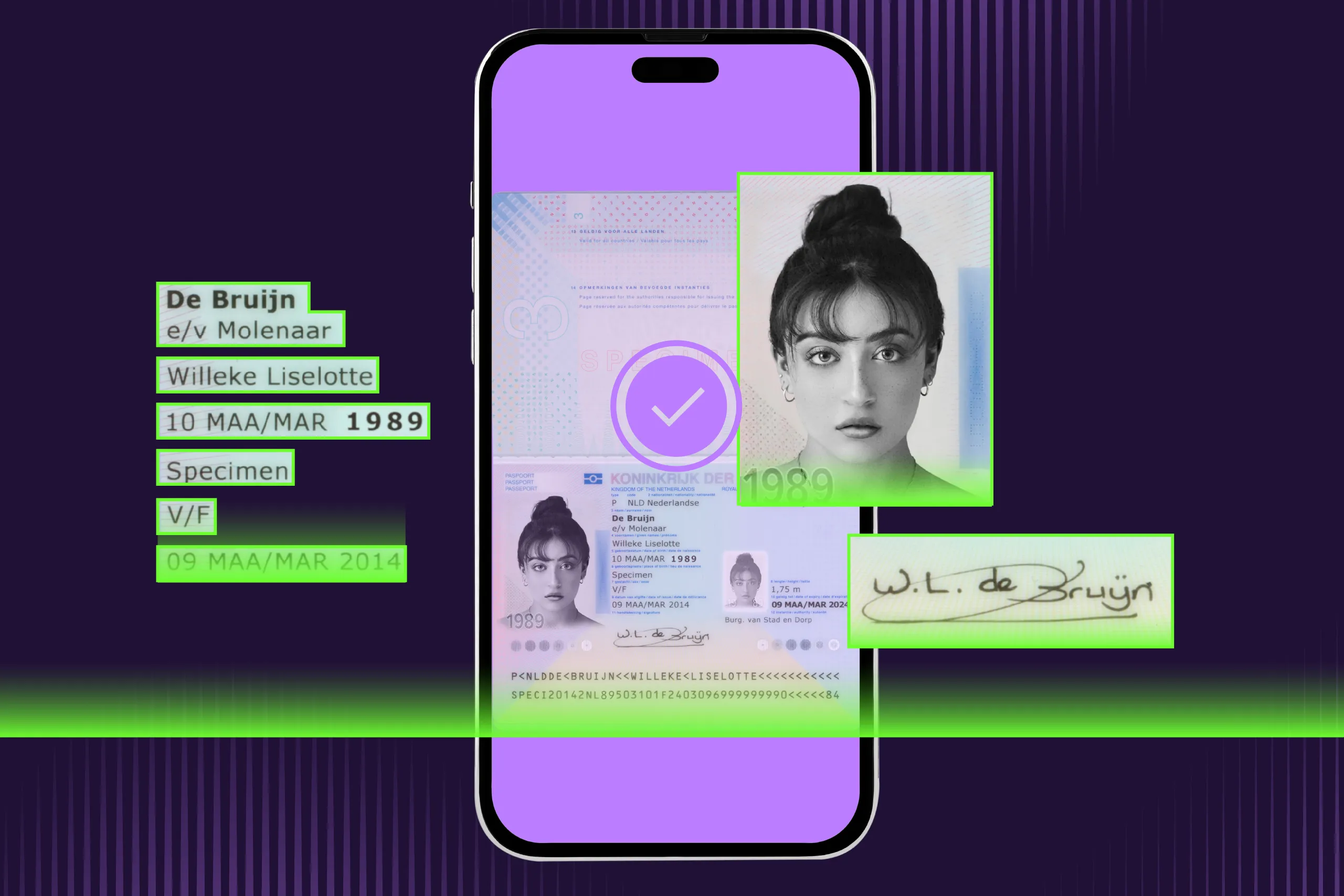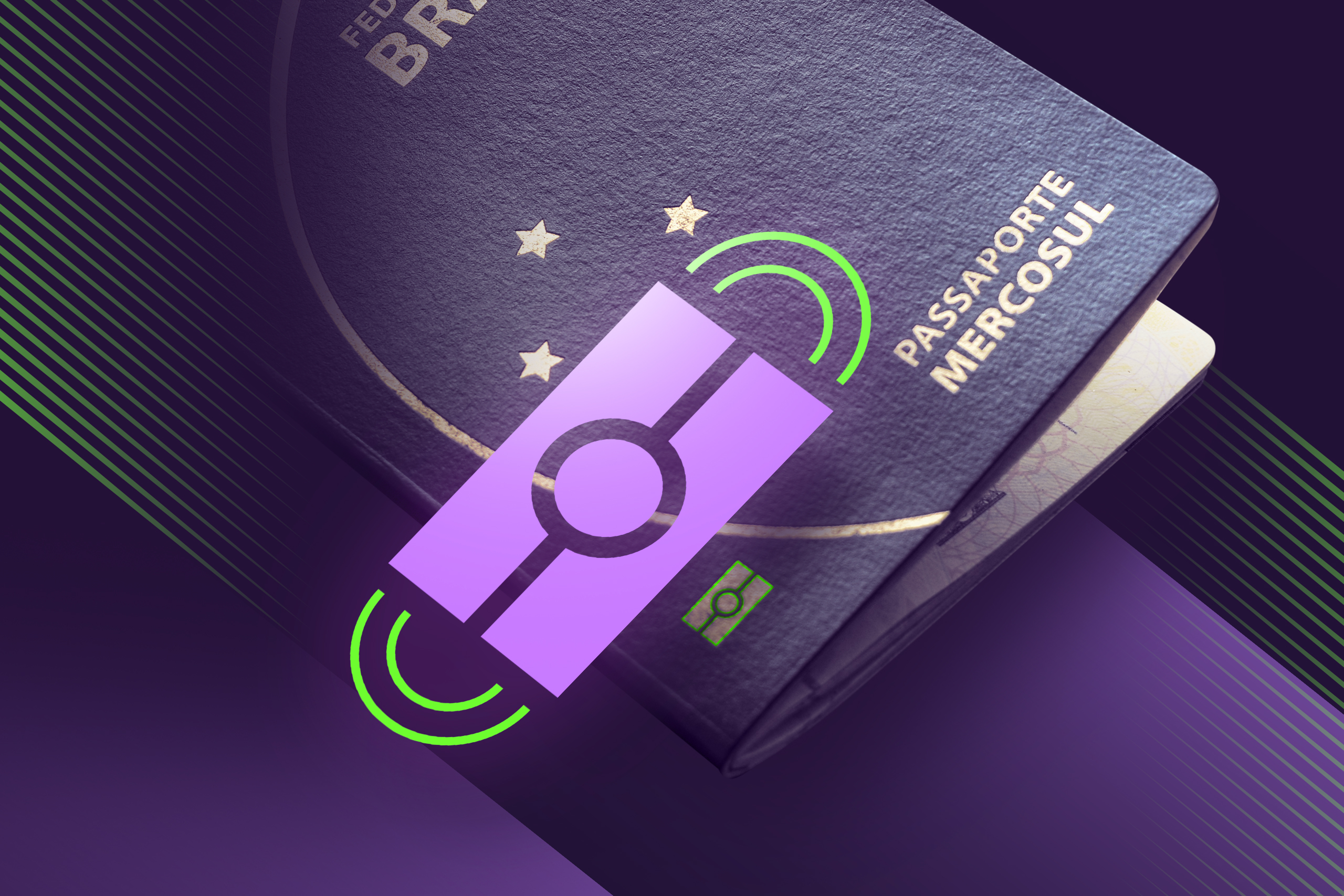Any modern passport or national ID card will contain a section with seemingly random letters and numbers divided by < symbols. This section has a name: the machine-readable zone (MRZ)—and MRZ reading is extremely important for automated ID verification.
The machine-readable zone is a global standard that holds key personal data in a format that computers can quickly scan and verify. But what data does it hold exactly? And how do systems work with it? Read further to find out.
Get posts like this in your inbox with the bi-weekly Regula Blog Digest!
What is an MRZ?
A machine-readable zone is a specially formatted area on an ID document that encodes the holder’s personal data in a way that computers can process. The MRZ consists of two or three lines of printed text—typically found at the bottom of the document’s data page—using a standard OCR-friendly font (OCR-B).
.webp)
The lines contain vital information and a series of check digits to verify the data’s integrity:
Document type and issuing country: PCAZE for an Azerbaijani passport.
Name of the holder: HUSEYNLI ORKHAN.
Document number: X05000107, followed by a check digit, 0.
Nationality: Encoded as a three-letter country code (AZE).
Date of birth: In YYMMDD format (750315), plus a check digit (3).
Sex: M (for male).
Document expiration date: In YYMMDD format (340710), plus a check digit (5).
Personal identification number: 30LJV5Z.
Additional check digits: 86.
A recent update
Until recently, the document type code used only the letter “P” to indicate a passport. However, under the latest edition of Doc 9303, effective January 1, 2026, the type of machine-readable passport must be specified in more detail in the machine-readable zone. As per the update, a second letter is now required in the code: “PP” for ordinary passports, “PE” for emergency passports, and so on.
The “PC” combination seen above in the specimen is also compliant with the new standard, meaning "Passport, Civil" — Azerbaijan’s designation for a standard national passport.
The machine-readable zone of passport or any other ID document uses only a limited character set (A–Z, 0–9, and the < filler character) and follows a strict layout, defined by the International Civil Aviation Organization (ICAO). ICAO maintains all the MRZ standards in document ICAO Doc 9303, so that every country’s passports and travel IDs conform to a common machine-readable format. Thanks to this, a border control scanner in any airport can decode the MRZ of a foreign passport and understand it, regardless of the document’s language or design.
How does the MRZ work?
Here’s what happens during MRZ verification when an ID document is scanned:

Optical scanning: A scanner or camera captures the machine-readable zone. Even mobile devices today can accurately read MRZ data from a photo thanks to the high-contrast, fixed-size font.
Data extraction: The OCR software detects the MRZ in the image and parses the text into separate fields (name, document number, etc.). Because the position and length of each field are standardized, the software knows exactly which characters represent the date of birth, the expiration date, and so on.
Data verification: Some of the fields in the MRZ are followed by a check digit, which is calculated from the digits of the corresponding data (e.g., passport number or birthdate). The reading software recalculates the expected check digits from the extracted data and compares them to the ones in the machine-readable zone. If they don’t match, it indicates an error or alteration.
Why was the MRZ introduced?
Before MRZs, passports varied widely between countries, as their layouts and data fields weren’t yet standardized. This made passenger clearance at airports time-consuming and fraud-prone, as border officers would examine documents with different appearances and security features. That’s why enforcing a global standard was seen as a solution.
The first edition of Doc 9303 was published in 1980, with Australia, Canada, and the United States being the pioneers in issuing machine-readable passports following its guidelines. For the rest of the world, this became common only in the late 2000s, spurred by ICAO’s mandate that all member states begin issuing passports with MRZs by April 1, 2010.
Over time, other ID documents (such as national identity cards) also began implementing MRZs for the same reasons: standardization, security, and convenience.
Once verified, the decoded information (name, DOB, document number, etc.) is output in digital form. At border control, this data is instantly fed into immigration databases and watchlist checks. In commercial scenarios, the data can automatically populate forms in documents, and is also often checked against certain records (e.g., blacklists).
In biometric passports, which are becoming more and more prevalent, the machine-readable zone is also used to generate the access key that unlocks the RFID chip; if the MRZ is incorrect, the chip cannot be accessed.
What are MRZ formats?
The format of MRZs can differ slightly depending on the document type, mainly in the number of lines and characters:
Type 1 contains three lines with 30 characters in each (typical for national ID cards).
Type 2 consists of two lines, 36 characters long (relatively rare, most often used on visas).
Type 3 also has two lines, but each includes 44 characters (standard for passports).

There are, however, exceptions: some MRZs fall outside the scope of ICAO's travel document standards and are used more for localized identity checks (e.g., in DMV systems or mobile apps). This is more typical for documents used within the country, such as driver’s licenses:

The older version (2003) of a Swiss driver’s license is an example of a non-standard MRZ type.
A final word on machine-readable zones
While MRZs were originally developed for speeding up passport control at airports, their usefulness has now transcended border checkpoints. Banks, hotels, mobility service platforms, and online marketplaces all rely on MRZs to make sure they are dealing with legitimate users and customers.
When paired with a high-quality document reader, MRZs make identity verification faster, more consistent, and more secure.





